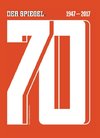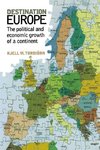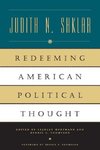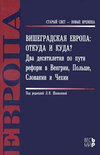
-
 Anglický jazyk
Anglický jazyk
Urban theorists
Autor: Source: Wikipedia
Source: Wikipedia. Pages: 70. Chapters: Friedrich Engels, Le Corbusier, Jane Jacobs, Christopher Alexander, Aldo Rossi, Robert Venturi, Frantz Fanon, Manuel Castells, Walter Benjamin, Paul Goodman, James Howard Kunstler, Lewis Mumford, Henri Lefebvre, David... Viac o knihe
Na objednávku, dodanie 2-4 týždne
18.57 €
bežná cena: 21.10 €
O knihe
Source: Wikipedia. Pages: 70. Chapters: Friedrich Engels, Le Corbusier, Jane Jacobs, Christopher Alexander, Aldo Rossi, Robert Venturi, Frantz Fanon, Manuel Castells, Walter Benjamin, Paul Goodman, James Howard Kunstler, Lewis Mumford, Henri Lefebvre, David Harvey, Mike Davis, Patrick Geddes, Richard Florida, Walter Block, Arthur P. Ziegler, Jr., Denise Scott Brown, Colin Rowe, Peter Hall, Percival Goodman, Léon Krier, Camillo Sitte, Richard L. Meier, Ebenezer Howard, Ildefons Cerdà, Marshall Berman, Konstantinos Apostolos Doxiadis, Asef Bayat, Loïc Wacquant, Kim Dovey, Joel Garreau, Witold Rybczynski, Kevin A. Lynch, Steven Izenour, Alexander Wilson, Dolores Hayden, Anna Minton, Donald Shoup, William H. Whyte, Sanjeev Sanyal, Raúl Zibechi, Rob Krier, Allan Jacobs, Thomas Sieverts, Leonid Sabsovich, Kristin Ross, Leonie Sandercock, David Pecaut, Marie Huchzermeyer, Charles Mulford Robinson, Marcelo Lopes de Souza, Ananya Roy, Mikhail Okhitovich, Peter J. Taylor, Frederic Osborn, Donald Appleyard, Frank Charles Mears, Andy Merrifield, List of urban theorists, Lucien Kroll. Excerpt: Charles-Édouard Jeanneret, better known as Le Corbusier (French pronunciation: ; October 6, 1887 - August 27, 1965), was a Swiss-born French architect, designer, urbanist, writer and painter, famous for being one of the pioneers of what now is called modern architecture. He was born in Switzerland and became a French citizen in 1930. His career spanned five decades, with his buildings constructed throughout central Europe, India, Russia, one in North and several in South America. He was a pioneer in studies of modern high design and was dedicated to providing better living conditions for the residents of crowded cities. Le Corbusier adopted his pseudonym in the 1920s, allegedly deriving it in part from the name of a distant ancestor, "Lecorbésier." However, it appears to have been an earlier (and somewhat unkind) nickname, which he simply decided to keep. He was awarded the Frank P. Brown Medal in 1961. He was born as Charles-Édouard Jeanneret-Gris in La Chaux-de-Fonds, a small city in Neuchâtel canton in north-western Switzerland, in the Jura mountains, just 5 kilometres (3.1 mi) across the border from France. He attended a kindergarten that used Fröbelian methods. Young Jeanneret was attracted to the visual arts and studied at the La-Chaux-de-Fonds Art School under Charles L'Eplattenier, who had studied in Budapest and Paris. His architecture teacher in the Art School was the architect René Chapallaz, who had a large influence on Le Corbusier's earliest houses. In his early years he would frequently escape the somewhat provincial atmosphere of his hometown by traveling around Europe. About 1907, he traveled to Paris, where he found work in the office of Auguste Perret, the French pioneer of reinforced concrete. In 1908, He studied architecture in Vienna with Josef Hoffmann. Between October 1910 and March 1911, he worked near Berlin for the renowned architect Peter Behrens, where he might have met Ludwig Mies van der Rohe and Walter Gropius. He became fluent in Ger
- Vydavateľstvo: Books LLC, Reference Series
- Rok vydania: 2013
- Formát: Paperback
- Rozmer: 246 x 189 mm
- Jazyk: Anglický jazyk
- ISBN: 9781155603100







 Nemecký jazyk
Nemecký jazyk 
 Ruský jazyk
Ruský jazyk 



